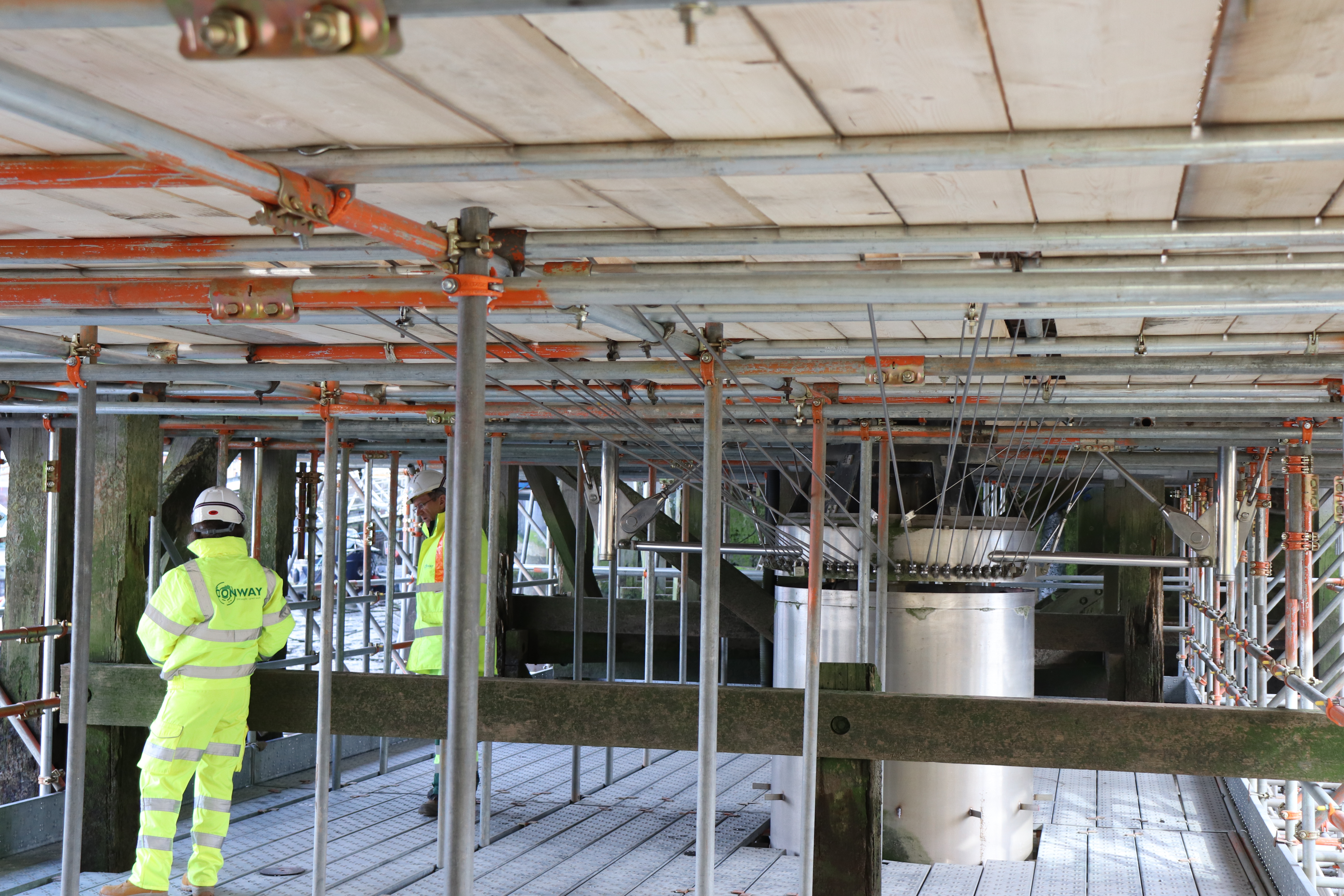Delivering Innovation
The stainless-steel cable stayed structure was built in 1995 by the London Docklands Development Corporation before handover to Southwark Council.
Since opening, the bridge has been subject to various mechanical, structural and operational issues. To ensure there were no safety issues, the bridge was fixed in the closed position in recent years, preventing the passage of large boats into St Saviour’s Dock.
Now, the London Borough of Southwark in partnership with CONWAY AECOM, has carried out a project to refurbish the bridge, the opening mechanism and the timber jetty approaches. By carrying out these much-needed refurbishment and maintenance works, the project will enable passage for larger boats as the bridge was originally designed to.
Through a regular maintenance review, the Council identified the need for a comprehensive upgrade to strengthen the bridge and keep it safe for public use, including renewal of its distinctive sailboat rigging and repairs to its hydraulic swing system.
As Southwark’s term maintenance contractor, FM Conway was appointed to refurbish the bridge, its opening mechanism and timber jetty approaches, working with its partner AECOM.
The team has modified the bridge’s existing balustrade structures to accommodate the new design of the strengthening works. Ducting and cabling have also been installed for a new power system for the swing mechanism.
Louise Chenery, a civil engineering apprentice in the team, has been helping to procure a 40mm veneer for the timber piles that support the bridge’s two timber approach jetties.
Louise Chenery, Civil Engineering Apprentice at FM Conway, explains:
“The water damage to the wood is cosmetic rather than structural. Our job has therefore been to find a suitable material for wrapping the existing timber, keeping the bridge looking ship-shape!”

